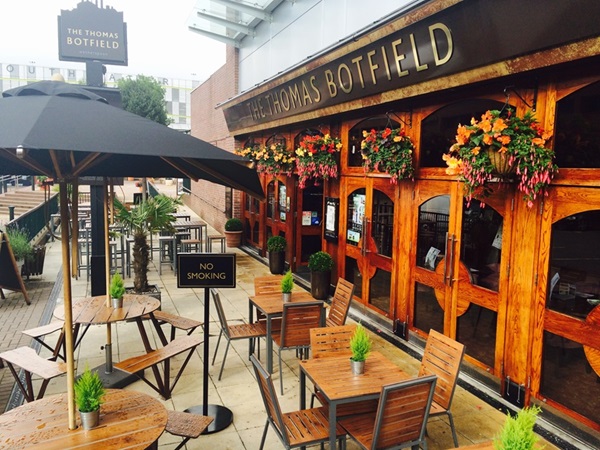Pub history
The Thomas Botfield
This Wetherspoon pub is named after a local industrialist. From the 1790s, the Malins Lee estate was transformed by Thomas Botfield. A Dawley man, Botfield built the Old Park Ironworks, fuelled by coal and iron ore from the collieries on the land he leased from Hawkins Browne. He built houses for his workers at Old Park, as well as the village of Dark Lane for the colliers. Situated 300m east of this pub, the main terraces in the village were Long Row and Bottom Row, with Stone Row to the south.
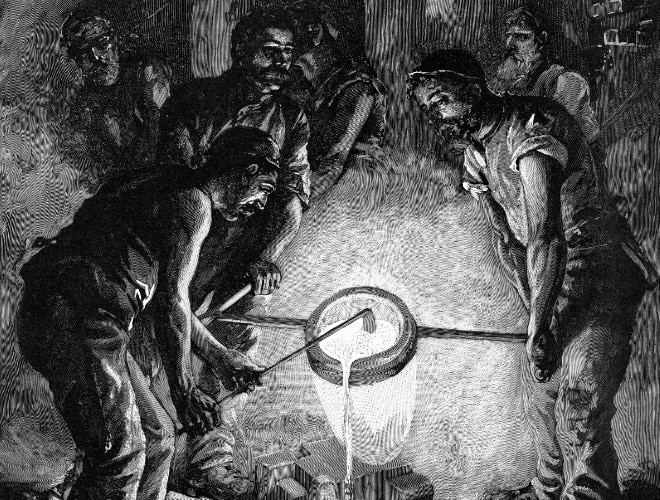
This Wetherspoon pub is named after a local industrialist. From the 1790s, the Malins Lee estate was transformed by Thomas Botfield. A Dawley man, Botfield built the Old Park Ironworks, fuelled by coal and iron ore from the collieries on the land he leased from Hawkins Browne. He built houses for his workers at Old Park, as well as the village of Dark Lane for the colliers. Situated 300m east of this pub, the main terraces in the village were Long Row and Bottom Row, with Stone Row to the south.
A print and text about The Thomas Botfield
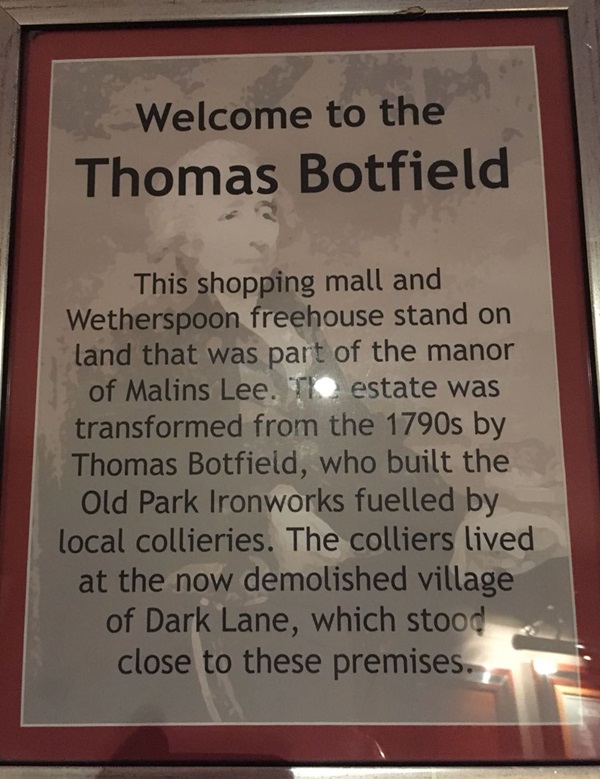
The text reads: This shopping mall and Wetherspoon free house stand on land that was part of the manor of Malins Lee. The estate was transformed from the 1970s by Thomas Botfield, who built the Old Park Ironworks, fuelled by local collieries. The colliers lived at the now demolished village of Dark Lane, which stood close to these premises.
Photographs and text about literary locals
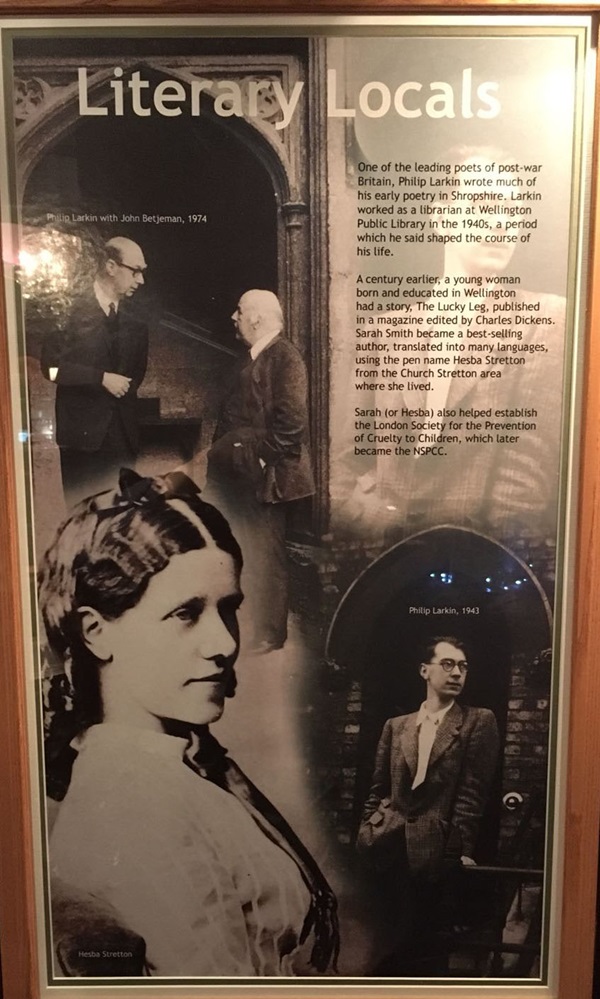
The text reads: One of the leading poets of post-war Britain, Philip Larkin, wrote much of his early poetry in Shropshire. Larkin worked as a librarian at Wellington Public Library in the 1940s, a period which he said shaped the course of his life.
A century later, a young woman born and educated in Wellington had a story, The Lucky Leg, published in a magazine edited by Charles Dickens. Sarah Smith became a best-selling author, translated into many languages, using the pen name Hesba Stretton from the Church Stretton area where she lived.
Sarah (or Hesba) also helped establish the London Society for the Prevention of Cruelty to Children, which later became the NSPCC.
Top: Philip Larkin with John Betjeman, 1974
Bottom, left: Hesba Stretton
Bottom, right: Philip Larkin, 1943
Photographs and text about Sir Gordon Richards
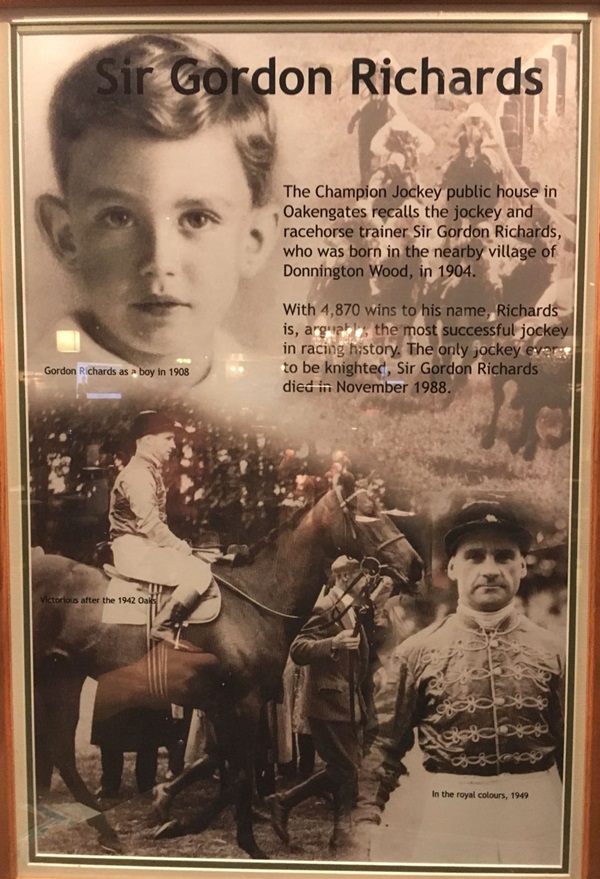
The text reads: The Champion Jockey public house in Oakengates recalls the jockey and racehorse trainer Sir Gordon Richards, who was born in the nearby village of Donnington Wood, in 1904.
With 4,870 wins to his name, Richards is, arguably, the most successful jockey in racing history. The only jockey ever to be knighted, Sir Gordon Richards died in November 1988.
Top: Gordon Richards as a boy in 1908
Bottom, left: Victorious after the 1942 Oaks
Bottom, right: In the royal colours, 1949
Photographs and text about Billy Wright
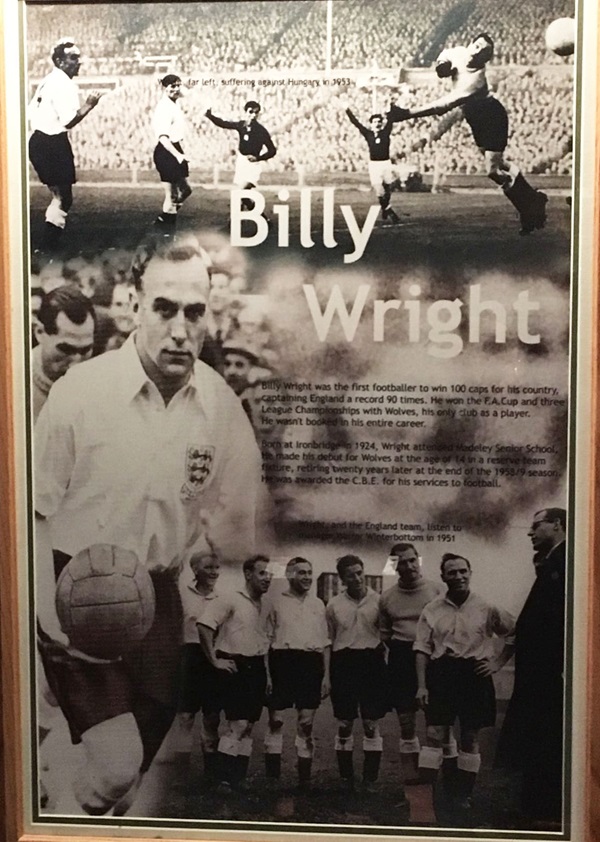
The text reads: Billy Wright was the first footballer to win 100 caps for his country, captaining England a record 90 times. He won the FA Cup and three league championships with Wolves, his only club as a player. He wasn’t booked in his entire career.
Born at Ironbridge in 1924, Wright attended Madeley Senior School. He made his debut for Wolves at the age of 14 in a reserve team fixture, retiring 20 years later at the end of the 1958/9 season. He was awarded the CBE for his services to football.
Illustrations and text about the Industrial Revolution
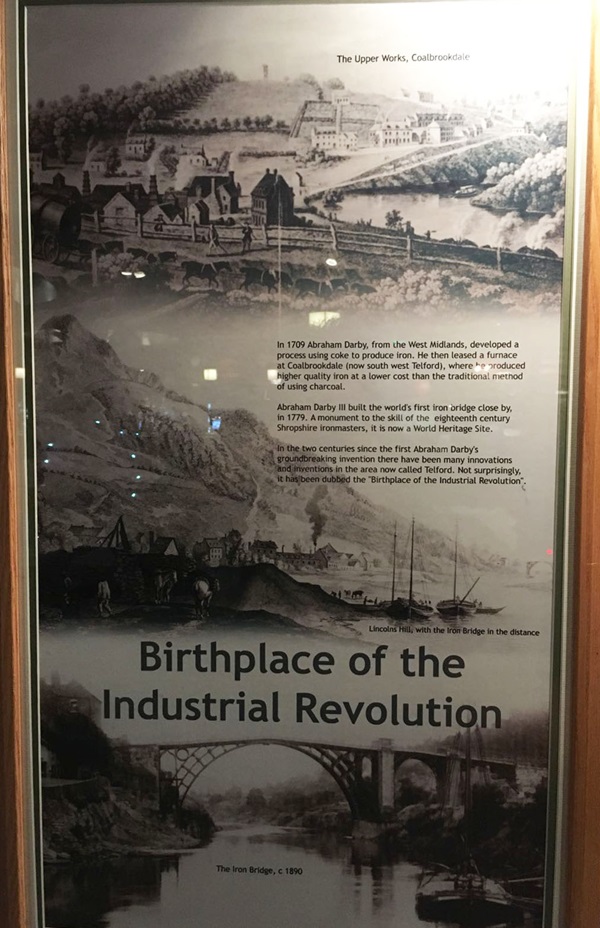
The text reads: In 1709, Abraham Darby, from the West Midlands, developed a process using coke to produce iron. He then leased a furnace at Coalbrookdale (now southwest Telford), where he produced higher-quality iron at a lower cost than the traditional method of using charcoal.
Abraham Derby III built the world’s first iron bridge close by, in 1779. A monument to the skill of the 18th-century Shropshire ironmasters, it is now a World Heritage Site.
In the two centuries since the first Abraham Darby’s ground-breaking invention, there have been many innovations and inventions in the area now called Telford. Not surprisingly, it has been dubbed the ‘Birthplace of the Industrial Revolution’.
Top: The Upper Works, Coalbrookdale
Centre: Lincolns Hill, with the Iron Bridge in the distance
Bottom: The Iron Bridge, c1890
External photograph of the building – main entrance
